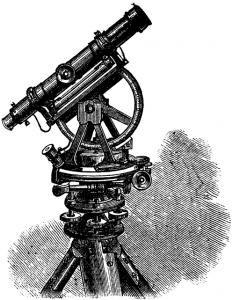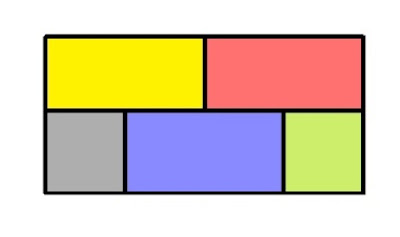THEODOLITES AND THE APPLICATIONS OF TRIGONOMETRY
A theodolite ( Application of trigonometry)
 A theodolite is a instrument used for measuring angles in vertical and horizontal planes.
A theodolite is a instrument used for measuring angles in vertical and horizontal planes.
A theodolite is used for the applications of trigonometry such as surveying, navigation, measuring distances etc.
A theodolite consist of movable telescope mounted on two perpendicular axes.
Surveyors have used trigonometry for centuries. One such large surveying project of the nineteenth century was the 'Great Trigonometry Survey' of British India for which the two largest-ever theodolites were built.
During the survey in 1852, the highest mountain in the world was discovered. From a distance of over 160 km, the peak was observed from six different stations.
In 1856, this peak was named after Sir George Everest, who had commissioned and first used the giant theodolites.
The theodolites are now on display in the Museum of the survey of India in Dehradun.
 A theodolite is a instrument used for measuring angles in vertical and horizontal planes.
A theodolite is a instrument used for measuring angles in vertical and horizontal planes.A theodolite is used for the applications of trigonometry such as surveying, navigation, measuring distances etc.
A theodolite consist of movable telescope mounted on two perpendicular axes.
Surveyors have used trigonometry for centuries. One such large surveying project of the nineteenth century was the 'Great Trigonometry Survey' of British India for which the two largest-ever theodolites were built.
During the survey in 1852, the highest mountain in the world was discovered. From a distance of over 160 km, the peak was observed from six different stations.
In 1856, this peak was named after Sir George Everest, who had commissioned and first used the giant theodolites.
The theodolites are now on display in the Museum of the survey of India in Dehradun.



Comments
Post a Comment